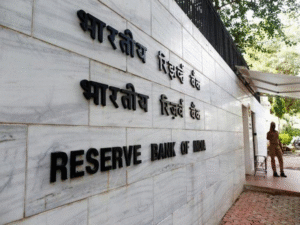BHARAT 2030: Tier-II & III Cities Will Shape India’s Rs. 10 Lakh Crore Real Estate Future
New Delhi [India], June 2: As India’s real estate growth enters a new phase, a silent but significant transformation is underway that is shifting the centre of gravity away from the country’s traditional metros. In his latest strategic report titled “BHARAT 2030: The Silent Surge of Tier-II and Tier-III Cities”, Ashwinder R. Singh–Chairman of the CII Real Estate Committee (North), Vice Chairman of BCD Group, and Advisor to NAR India- maps the future trajectory of growth and inclusion in Indian real estate.
As per the report, the new wave of expansion is not driven by temporary demand overflow, but by long-term structural shifts in aspirations, affordability, and accessibility. Tier II cities like Raipur, Salem, Belagavi, Hosur, Jabalpur, Aurangabad, Tirunelveli, Siliguri, Baddi, Udaipur, and Warangal are emerging as the real engines of India’s next growth story.
Tier III cities like Ayodhya, Dharwad, Sangli, Haldwani, Ajmer, Barshi, Kharagpur, Nanded, Agartala, and Kollam have historically remained under the radar but are now stepping into the spotlight, building the next Rs. 10 lakh crore of India’s real estate economy.
Ashwinder R. Singh – Chairman of the CII Real Estate Committee (North), Vice Chairman of BCD Group, and Advisor to NAR India, states, “For decades, India’s real estate narrative revolved around the top 7-8 metro cities. But that story is being rewritten. What we’re witnessing is not just spillover from saturated metros; it’s a fundamental reshaping of the growth landscape. Cities once considered peripheral are now emerging as vibrant hubs for housing, employment, infrastructure, and investment.”
The report identifies this shift not as a cyclical deviation from the dominance of metros like Delhi, Mumbai, or Bengaluru, but as a deeper reordering of India’s urban development model. It pinpoints the specific growth corridors that exemplify this transformation.
Bhubaneswar is leading the way with walkable neighbourhoods rooted in smart city design and cultural context. Jabalpur and Gwalior are witnessing township-led growth spurred by improved highway networks and air connectivity. Cities like Salem and Tirunelveli are becoming health-tech magnets, following the lead of Coimbatore.
In central India, warehousing hubs are emerging in Raipur, Siliguri, and Belagavi, driven by their strategic locations and enhanced connectivity. Industrial corridors in Hosur, Aurangabad, and Pithampur are evolving into EV manufacturing zones, generating demand for both workforce and executive housing.
Even the knowledge suburbs of Chandigarh, such as Baddi, Barotiwala, and Derabassi, are transforming from industrial satellites into integrated living ecosystems. Meanwhile, cities like Lucknow and Ayodhya are undergoing a renaissance, fuelled by government investment, institutional development, and spiritual tourism.
One of the most powerful insights from Singh’s report is that infrastructure in these cities is leading development. Infrastructure in Tier-II and Tier-III cities is becoming the new imperative for Indian real estate, with expressways, regional airports, railways, and metro lines laying the groundwork for expansion. Corporates are entering early, drawn by cost advantages and access to local talent. Land remains both affordable and available, enabling large-scale, community-led developments. Rising household incomes, improved education, and digital reach are driving aspirations upward. Besides, local governments are offering faster approvals and policy support, making these cities more investor-friendly. The growing trend of reverse migration is further accelerating this shift, as people return home in search of a better quality of life.
In terms of strategy, the report encourages developers to enter early, focusing on plotted developments, affordable housing, and township models, while partnering with local players and ensuring timely delivery to build trust and value. Investors need to look beyond the herd, identifying locations where infrastructure aligns with policy intent, signalled by upcoming highways, GCCs, rail links, and institutional projects. Policymakers must treat these cities as testing grounds for reform, enabling faster digital approvals, promoting sustainable urban mobility, and incentivising ESG-led development for long-term impact.
India@2030 will not be defined solely by the skylines of Delhi, Mumbai, or Bengaluru. It will take shape in the quieter, determined rise of Tier II and III cities. This transformation is about more than just economic growth; it’s about achieving balance, enabling inclusion, and unlocking opportunity across geographies.
Ashwinder R. Singh is Chairman – of the CII Real Estate Committee (North), Vice Chairman & CEO – BCD Group, and Advisor – NAR India. He has authored three leading industry books, regularly delivers keynotes at top real estate forums, and is widely regarded as one of India’s strongest advocates for channel partners and broker networks.






